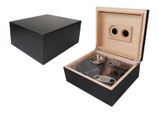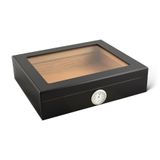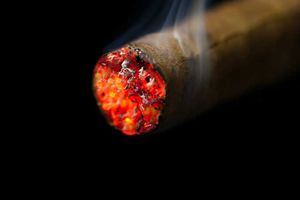Storage conditions
Under optimal conditions, the shelf life of cigars can be very long. Some specimens are stored for 20 or more years, but it is believed that they “keep” the most intense aroma for 1-3 years from the end of the aging period. However, this is only true if the optimal parameters for this product are observed. Temperature. It is relatively easy to maintain the temperature regime at home: almost room temperature of 16-21 ° C is considered ideal. Even if your apartment is a little warmer, it's not scary. The main thing is to ensure that the temperature does not exceed the threshold of +24 ° C, otherwise the entire stock may become unusable. If from autumn to spring it is quite easy to maintain such a temperature regime, then what to do in the summer, when the house is unbearably hot? It is best to find the coolest possible shelter for cigars during this period: a dark closet, the coldest corner of the room, the upper shelves in the cellar, etc. Humidity. Ideally, this figure should be 65-72%, with Cuban cigars best stored at 65% humidity, and the rest at 68%. When the humidity drops to 55%, this product dries out, and when it rises to 80%, it becomes damp and may become moldy. For control, you can hang a hygrometer in the storage place and, if necessary, adjust the microclimate using household humidifiers and dehumidifiers. Storage. Humidors have been invented to maintain the optimal humidity level for cigars. If you do not have such a device, you can create some kind of its semblance with your own hands. But the most unsuitable place for storage is ... a refrigerator! In no case do not put cigars in it, otherwise they will be saturated with the smells of all the products that are stored there. In addition, if the temperature drops below the optimum, high humidity is needed for normal preservation, and this indicator in the refrigerator is much lower than required. In addition, a sharp decrease in humidity and temperature can cause the cigar to "explode", as its filling swells and breaks through the upper layers.































